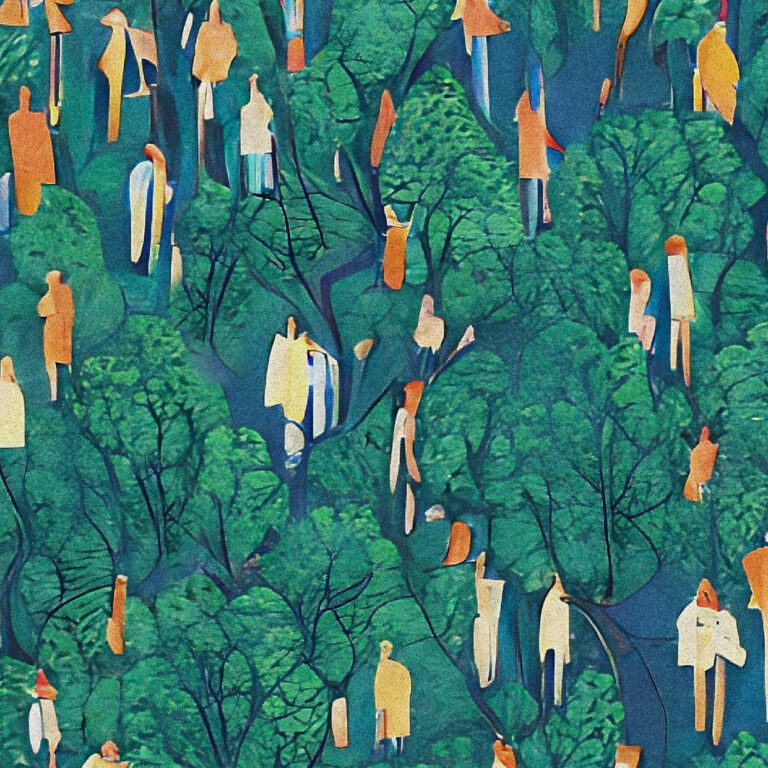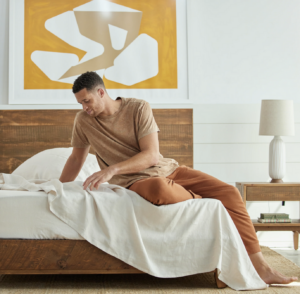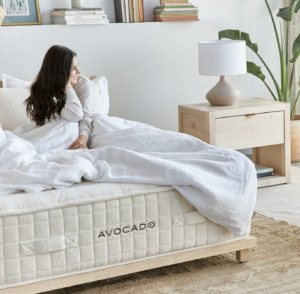How AI is reshaping the way we think about—and experience—sleep.
In the 1970s, the field of sleep medicine was just beginning to take shape. Stanford University established the first lab dedicated to studying sleep disorders, and conditions that had long gone unnamed, like sleep apnea and insomnia, were finally being clinically defined. Sleep tech meant wires and electrodes, CPAP machines, and overnight monitoring in clinics. The concept of “sleep hygiene” was straightforward, advising basic lifestyle changes like maintaining a regular bedtime and avoiding caffeine at night.
Today, sleep has become more than just a basic human need. It can be a status symbol, a dataset, a lifestyle metric. We wear rings that track our biometric data, stretch out on smart mattresses that adjust with every toss and turn, and use soundscapes generated by algorithms to help us drift off. And, like so many aspects of modern life now subject to measurement and improvement, sleep has become a new frontier for optimization through artificial intelligence.
“Sleep is a subjective experience. However, there’s tremendous value in objective measurements—like the insights wearable devices provide,” said John Lopos, CEO of the National Sleep Foundation, during a 2024 SXSW panel on sleep tech. “The capabilities of AI take it to the next level. AI technology can enable personalized information to be shared with users and empower them to make small behavioral changes for the better.”
AI’s usefulness is still up for debate in many areas, but with sleep quality declining globally (the average person’s sleep duration has fallen below the seven-hour threshold recommended by the National Sleep Foundation), this might be one area where we could use all the help we can get. Here’s a primer on how artificial intelligence is reshaping the way we think about—and experience—sleep.
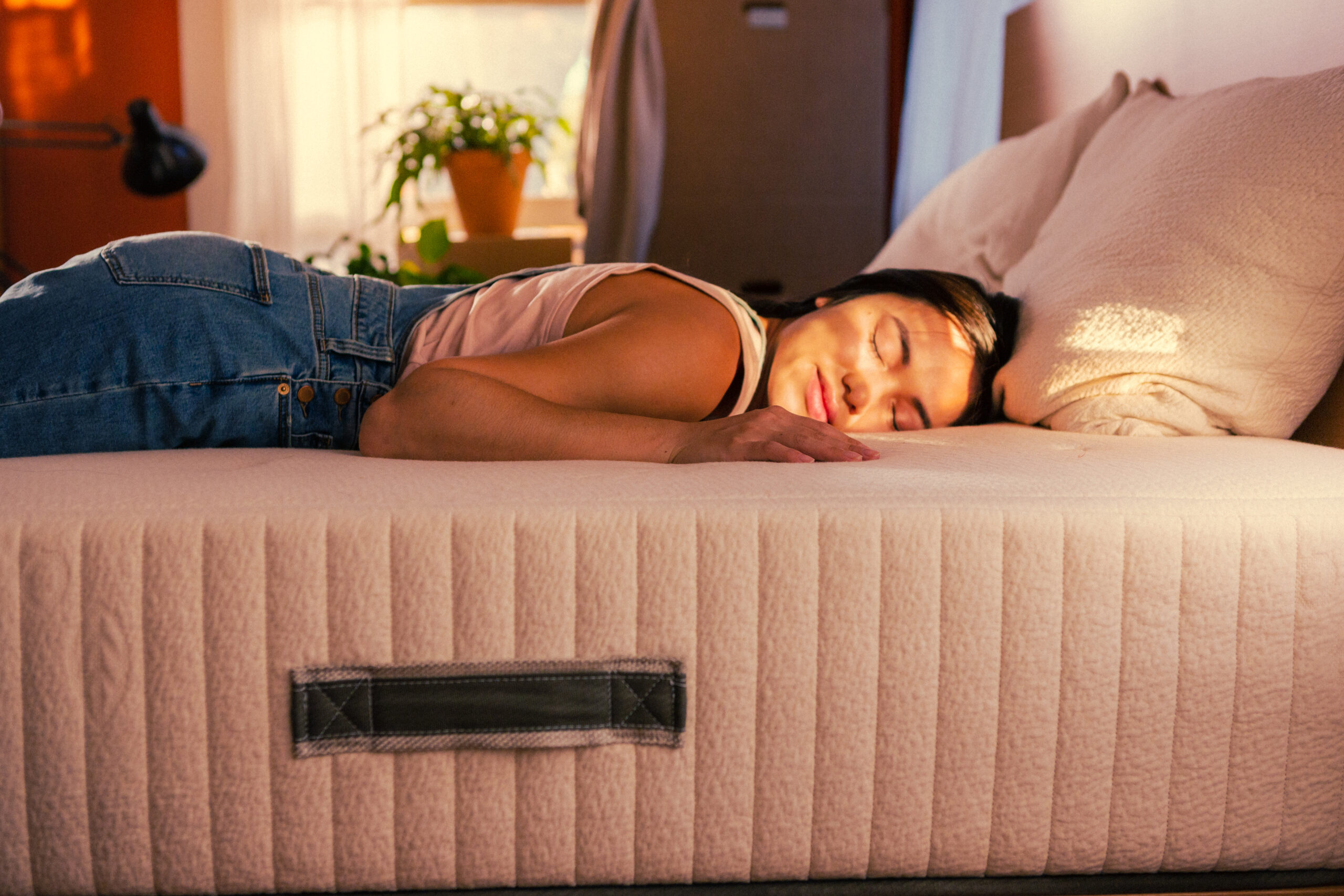
Read more: 2025 Sleep Trends: Experts Reveal Which Actually Work
Sleep Tracking and Analysis
AI can now be used to map the topography of our nights, tracking, analyzing, and interpreting what happens while we rest. Unlike many areas of health, sleep produces an immense stream of physiological data, making it especially ripe for AI-driven innovation. In fact, AI-enhanced sleep tech is now one of the fastest-growing sectors within digital health. (Regulators are still catching up, with the American Academy of Sleep Medicine’s AI committee shaping best practices and the FDA evaluating emerging tools for safety and effectiveness.)
Deep learning models trained on mountains of sleep data can now be used to detect sleep stages with remarkable accuracy. Companies like Oura, Whoop, and Fitbit aren’t just handing out gimmicky sleep scores, they’re running AI models that only a few years ago were considered cutting-edge technology. But these algorithms are doing more than just spotting patterns—they’re helping us begin to understand them, identifying a narrative of sorts from subtle nightly signals like the twitch of the wrist or a shift in breath.
Diagnosis and Care
While the basic principles of sleep hygiene still apply, they’re now considered the starting point rather than the full solution for people with chronic insomnia, circadian rhythm disruptions, or other sleep disorders. For decades, sleep medicine has relied on polysomnography (think wires and electrodes) to monitor the sleeping brain and provide diagnoses, but it isn’t a realistic option for some due to cost, location, and availability.
That’s where AI has the potential to make a meaningful impact. Take obstructive sleep apnea, for example—a condition that affects an estimated billion people globally, yet remains widely underdiagnosed. AI tools can help flag early indicators, such as abnormal breathing patterns, and automate time-intensive tasks like scoring sleep studies. This could expand access to diagnostics, particularly in rural clinics, low-resource settings, and even people’s homes.
AI is also being used to better understand and manage more complex, harder-to-define conditions like insomnia and narcolepsy. By analyzing large datasets, it can help identify subtypes of insomnia, personalize cognitive behavioral therapy, and even predict which treatments are likely to work for individual patients. For clinicians, AI has the potential to offer more time to listen, notice, and treat, from monitoring treatment progress, spotting early warning signs, and tailoring interventions.
“Responsible use of AI-enabled tools can provide more data, which empowers both clinicians and patients to engage in shared decision-making about sleep health,” says Anuja Bandyopadhyay, spokesperson and past chair of the American Academy of Sleep Medicine’s AI Committee.
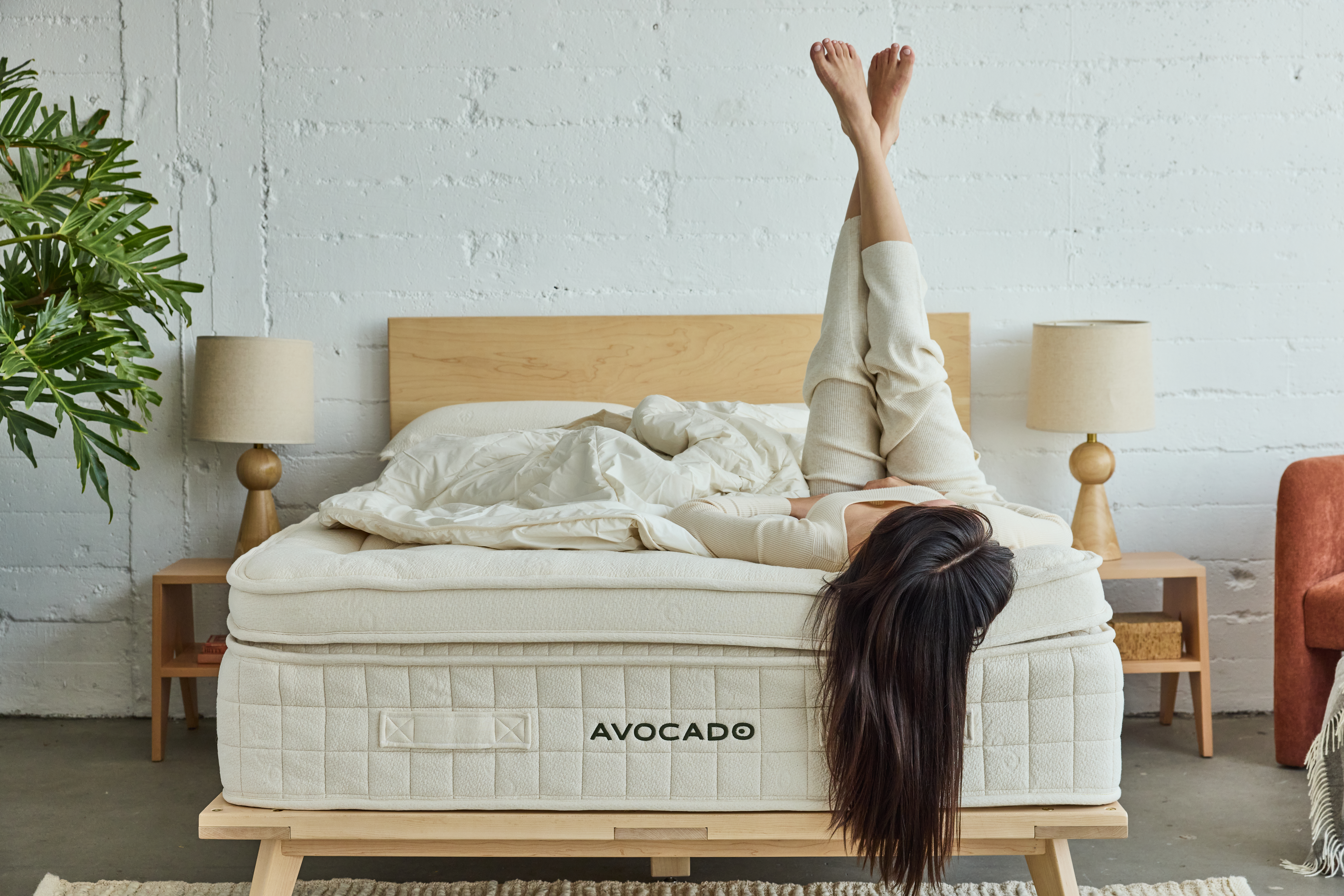
Read more: Unwind With These Bedtime Yoga Stretches For Better Sleep
Individualized Optimization
What was once a simple list of do’s and don’ts has expanded to include wind-down rituals, meditation apps, screen-time curfews, blue light filters, and AI-generated soundscapes. There’s also a growing awareness of how psychological and environmental factors—stress, screen exposure, and work-life boundaries—can affect sleep. In short, sleep hygiene has gone from a checklist of behavioral tips into a broader, more holistic (and more commercialized) concept, blending clinical science with consumer wellness and digital health trends.
AI-enhanced sleep technology can now be utilized to provide personalized suggestions on when to when to go to sleep, what to avoid before bed, and how much deep sleep you need. Some recommend wind-down routines tuned to your circadian rhythm. One app utilizes diffusion models (the same used to create AI art) to create personalized sleep sounds, tailored in real time based on inputs like your heart rate, location, weather, and mood.
Neuroscience and Research
On the research front, sleep scientists and neuroscientists are using AI to model our internal circadian rhythms based on data collected over months or even years. By analyzing patterns in behavior and physiology, these models aim to predict when a person is most ready to sleep, eat, or think clearly—not just according to the clock, but based on individual rhythms. This work could help night-shift workers maintain cognitive health, support travelers adjusting to new time zones, or assist people with neurological conditions in regaining a more stable daily rhythm.
Some researchers are even looking to better understand how the brain emotionally processes experiences during sleep. In early studies, researchers are applying natural language models to dream reports, in hopes of uncovering patterns and recurring themes that even clinicians might overlook. AI is also helping researchers study how the brain consolidates memories at night. By processing large volumes of neural data, scientists are beginning to identify when and where memories are reactivated—traces of past experience quietly resurfacing as the brain organizes itself during sleep. Researchers hope that one day, this kind of analysis could support the early detection of conditions like PTSD, depression, or cognitive decline.
Sleep scientists are increasingly bringing AI into the fold—using it to flag disorders earlier, streamline diagnoses, and tailor treatments to our individual bodies and brains. The field is still finding its footing, and the tech isn’t flawless, but it’s beginning to fill in some of the gaps that clinical care has long struggled with: access, scale, time.
And while no algorithm can replace the peculiar alchemy of a good bedtime routine—your chamomile tea and lavender pillow spray still have their place—AI might just become a surprisingly helpful co-pilot in our ongoing attempt to make sense of sleep (and hopefully, to get get a little more of it).
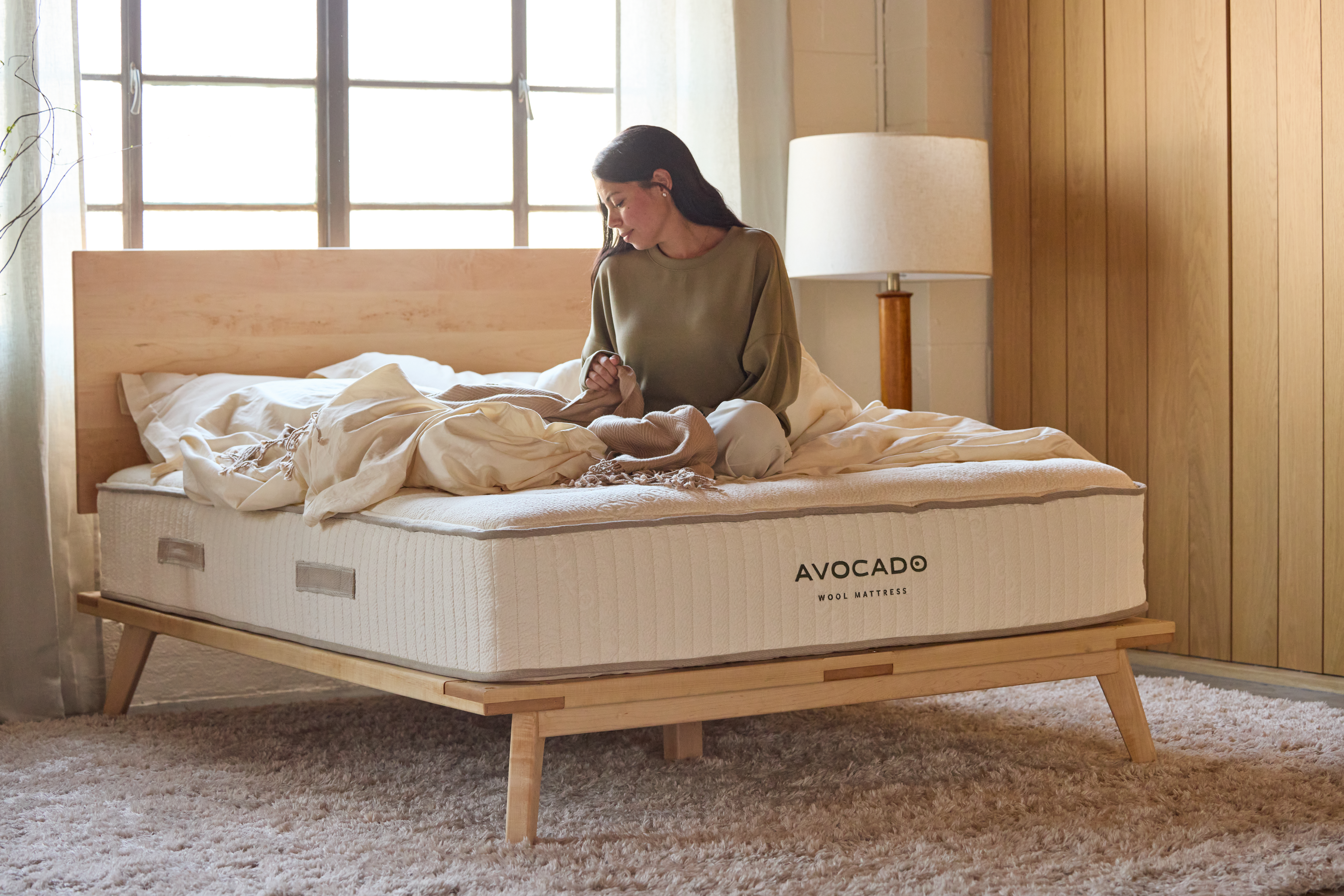
Read More: Boost Your Mood Naturally with a Dopamine Menu
Have feedback on our story? Email [email protected] to let us know what you think!

Shop Pillows
The Essential Organic Pillow Collection
Gentle, breathable, non-toxic support.

